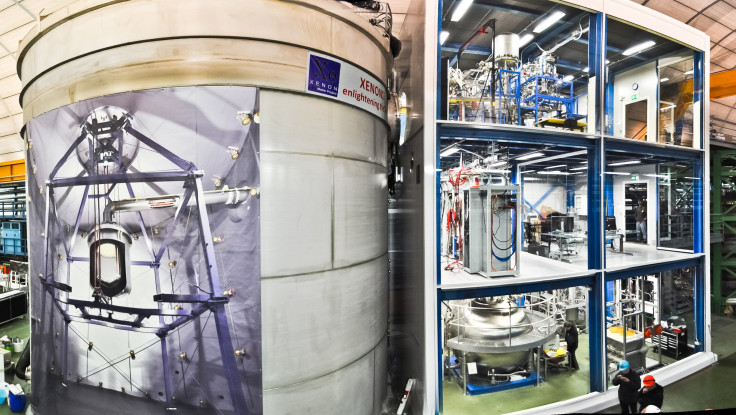Dark Matter: XENON Collaboration Inaugurates New Experiment To Hunt For WIMPs

For reasons that are not yet entirely clear, nearly 85 percent of the universe we live in is made up an enigmatic substance known “dark matter.” While scientists have long been hunting for clues to its composition, the fact that it does not emit or absorb any radiation makes it next to impossible to detect and study.
Although the as-of-yet hypothetical Weakly Interacting Massive Particles (WIMP) -- believed to interact with normal matter through gravity and the weak nuclear force -- are currently the leading candidate to explain the composition of dark matter, even the Large Hadron Collider at CERN -- the world's most powerful particle accelerator -- has so far failed to detect them.
Now, a new international collaboration has joined the hunt, launching the world’s most sensitive detector for dark matter -- the XENON1T instrument located under the Gran Sasso Mountain in central Italy.
“We expect that several tens of thousands of dark matter particles per second are passing through the area of a thumbnail,” Luca Grandi, a member of the XENON collaboration and an assistant professor in physics at the University of Chicago, said, in a statement released Wednesday. “The fact that we did not detect them yet tells us that their probability to interact with the atoms of our detector is very small, and that we need more sensitive instruments to find the rare signature of this particle.”
This is where the XENON experiment -- a collaborative effort of 21 research groups from across the world -- comes in. The new instrument, containing 3.5 tons of ultra-pure noble gas Xenon cooled to nearly -140 degrees Fahrenheit to make it liquid, is installed inside a 10-meter-wide water shield to protect it from radioactive background radiation.
XEON1T’s first results are expected in early 2016, and scientists expect it to complete its objectives within two years. In principle, the new detector should, within a few weeks of switching on, detect dark matter at any moment. However, even if it doesn’t, the lack of detection will help scientists lower the limits on the strength of WIMP’s interaction with normal matter.
“Of course we want to detect the dark matter particle,” Grandi said, in the statement. “But even if we have only found some hints after two years, we are in an excellent position to move on as we are already now preparing the next step of the project, which will be the far more sensitive XENONnT.”
© Copyright IBTimes 2024. All rights reserved.












